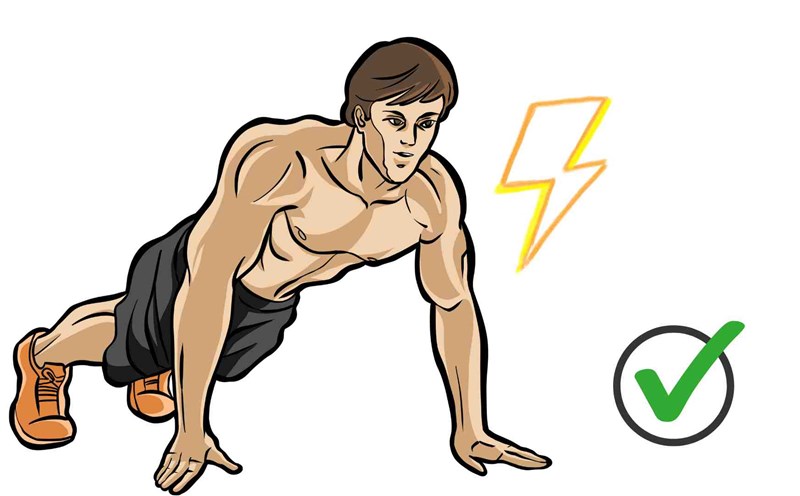However, many people practice incorrect techniques, leading to shoulder or wrist injuries, causing results not to be as expected.
According to American fitness trainer Mark Sisson, author of The Primal Blueprint Fitness, Pushing is not only a classic exercise but also a comprehensive physical strength test. But to develop real muscle, practitioners need to pay attention to posture, breathing and intensity".
Practitioners should start in a plank position: place your hands slightly wider than shoulders, keep your back straight, tighten your abs, lower your body until your chest is close to the floor and then push up. Avoid back curves, hip flexors or shoulder drops, these are common mistakes that cause spinal injury and reduce muscle efficiency.
fitness trainer Dr. Jordan Metzl (HSS, New York) recommends: To increase muscle mass safely, start with a moderate number of push-ups and gradually increase by 10 20% per week. Do not force your body with advanced variants when you do not have enough strength. He also suggests taking at least 48 hours of rest between two chest exercises so that muscles have time to recover and develop.
In addition to technique, nutrition and rest play an important role. Supplementing enough protein (1.2 1.6 g/kg/day) helps muscles regenerate faster, along with drinking enough water and getting at least 7 hours of sleep per day.
For beginners, just 3 sessions/week, each session is 3-4 sets, each set is enough to improve strength and tone the body. When used, you can try variants such as anti- throttle push-ups (back muscle increase), anti-leg push-ups (increased difficulty) or anti-diament push-ups (concentration of the mid-brist muscles).
The most important thing, according to experts, is to maintain standard techniques and listen to the body, that is the "golden key" to preventing safe and sustainable muscle gain.











